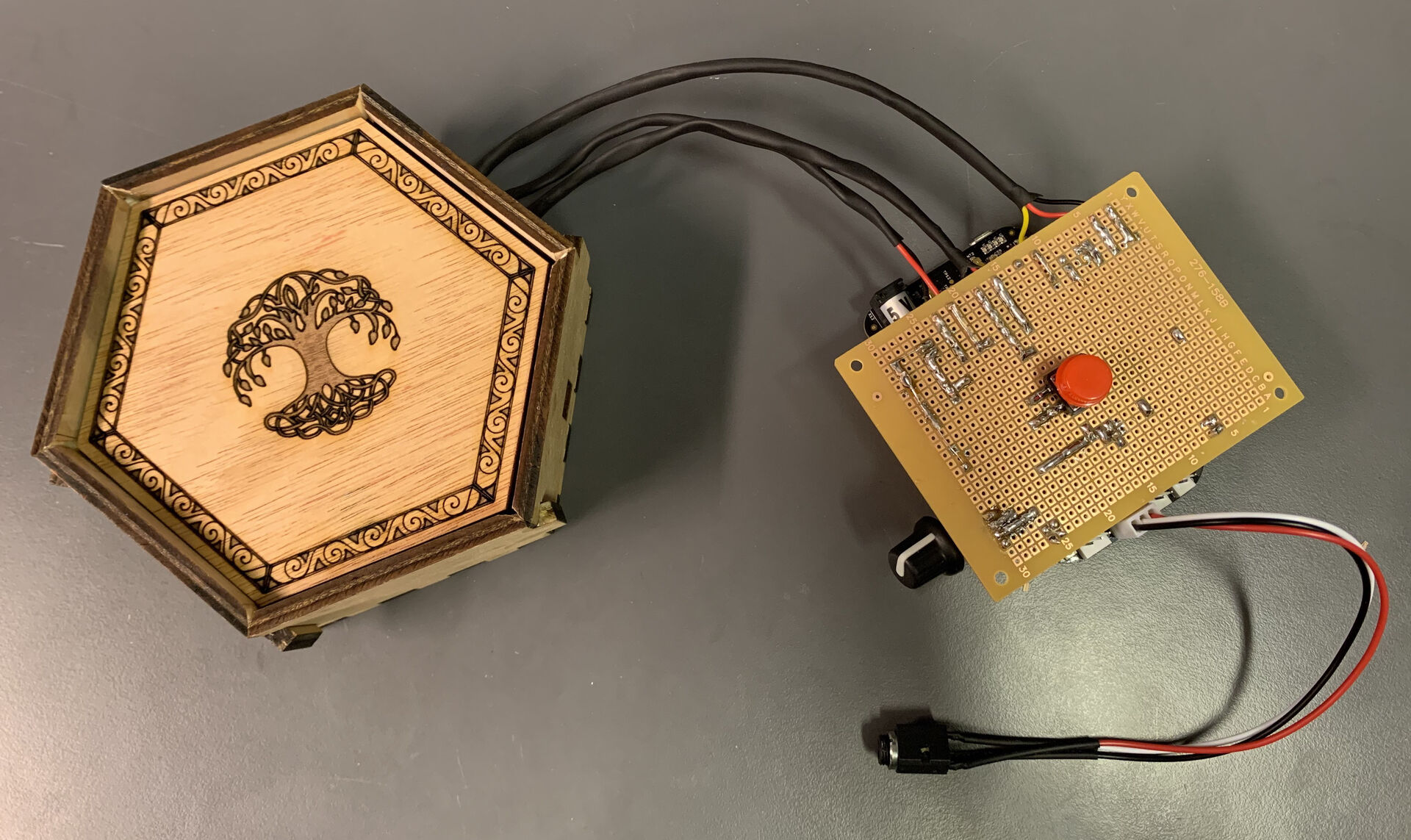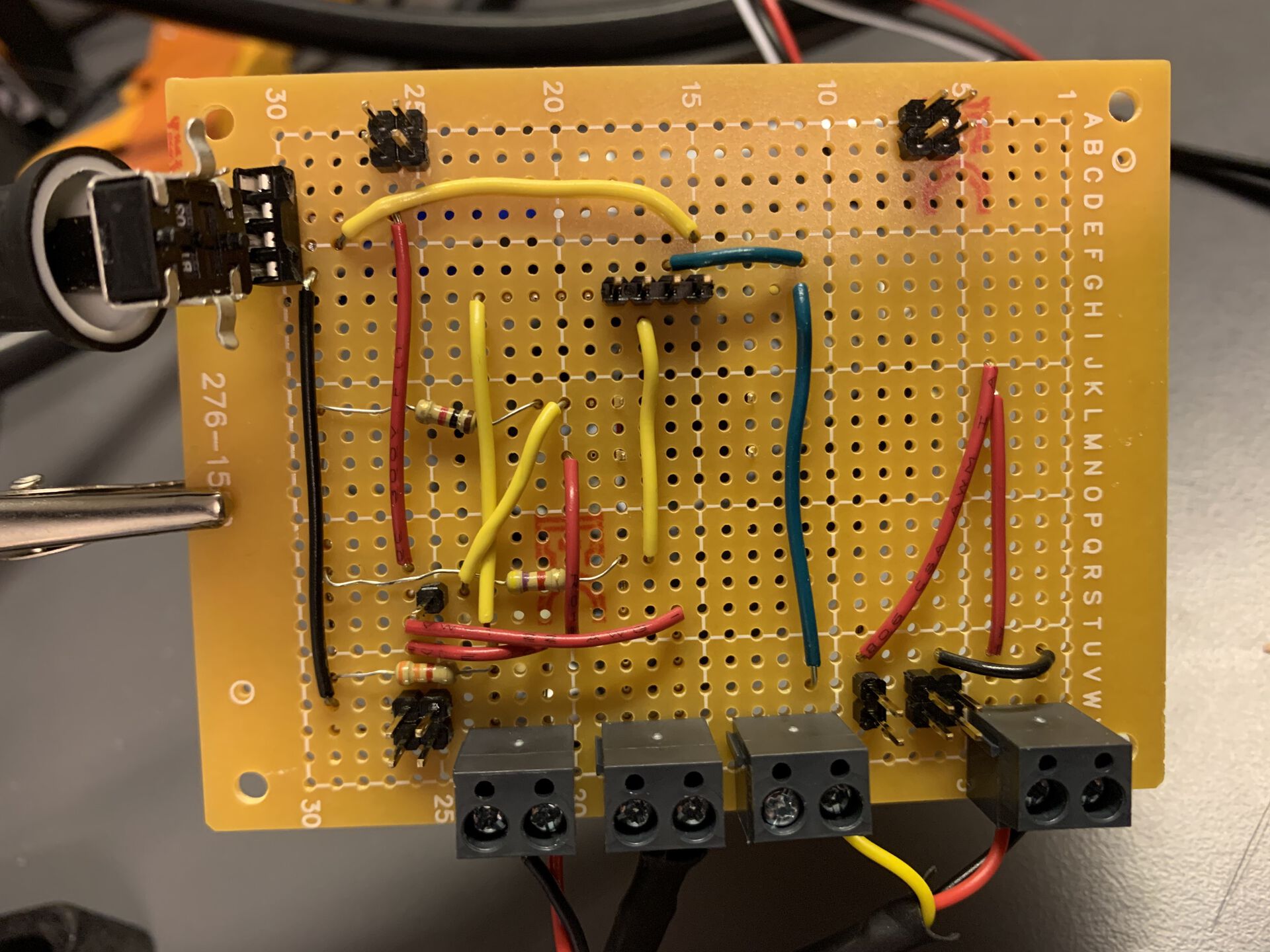Yggdrasil: An Environmentalist Interactive Music Installation

I keep reading about how most new electronic instruments are short-lived and rarely picked up by others than the person who created them. Making an instrument is difficult, and convincing others it’s worth playing is even more so. Knowing this, why go against the flow? I decided to create a music system designed to be ephemeral, while also experimenting with ideas for making users stick around.
Yggdrasil is an installation piece that promotes environmentalism. The concept was derived from the U.N. Sustainability Goals by exploring potential ways these can be translated into gestures and sound. I settled on “Climate Action,” where suggested actions are planting trees and working towards clean energy.
Interactive Music System
The user can perform an overtone series using their left hand. The overtone series is first performed with an uninteresting sound, but the user can develop it over time. To push the music forward, the user can place trees on a platform or shine an accompanying flashlight through a hole in the base of the installation to grow their overtone sound. In theory, the user can place anything on the platform, but the installation is calibrated for a set of accompanying whittled tree models.
Concept Design
Researching newer music systems for inspiration, I came across the Cicada, a physical synthesis module. While it also sounds great, I was drawn to the idea of moving physical pieces around to change the soundscape. As the core of my project was the idea of planting trees, this naturally led me to the idea of a platform on which you place whittled tree models. I used the same hexagon shape to avoid a boxy, uninteresting look, while leaving space on opposite sides of the case for different sensors.
Sensors
I’m using 3 different sensors to drive the system:
- Force Sensing Resistor: senses pressure generated by the platform and trees, which drives the music forward.
- Infrared Camera: the user moves their left hand in front of the camera to play an overtone series.
- Light Dependent Resistor: an accompanying flashlight will be used to nurture the forest. This changes the timbre of the overtone series. Multiple sensors allow for different kinds of mapping strategies and plenty of exploration while also supporting my climate action design goal.
While developing the system, I experimented with temporal mapping strategies—postponing the result of an action to be experienced later. This was inspired by the idea that, for better retention, an installation should gently introduce a user and gradually become more complex. I suggest only to use long-term mapping together with short-term mapping, as users may be thrown off by not receiving any feedback at all during their interactions.
Hardware Components
The casing was planned out in Inkscape before it was laser cut and oiled. I designed a light chamber to make the base ambient light absorbed by the light resistor more stable, 3 holes for cables, and a mount for the IR camera.
At the core of the system is a Bela board, built on a BeagleBone Black computer. I built my own circuit on top of the Bela to retrieve analog data from my sensors. The translation from my breadboard prototype to the perfboard is practically 1 to 1. I used some extra male headers to better support the attachment, making it feel more robust.

A button was added to be able to reset the calibration process, should the result not be ideal the first time. A rotary encoder was also added to be able to tweak the master output level without diving into the code.
Sound Generator
Sound generation was done in Pure Data. To ensure the installation can be used in different environments with different lighting, I created a calibration system that, with the push of a button, gives the user 10 seconds to use the system to its extremes. These extremes are then normalized before they are mapped to musical parameters.
Additional Remarks
Special thanks to Kjetil Normand for whittling the miniature trees, and to Skaperkraft Valdres for laser cutting my design.
